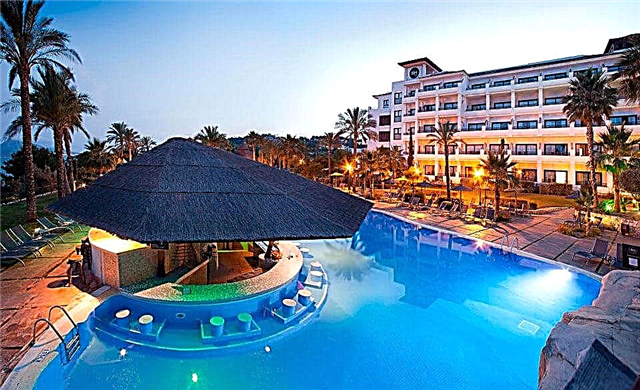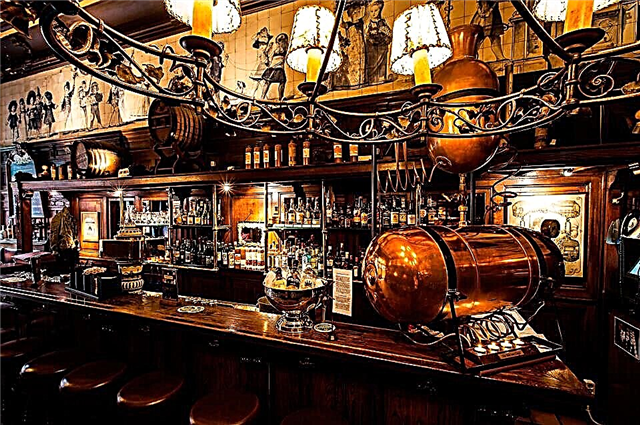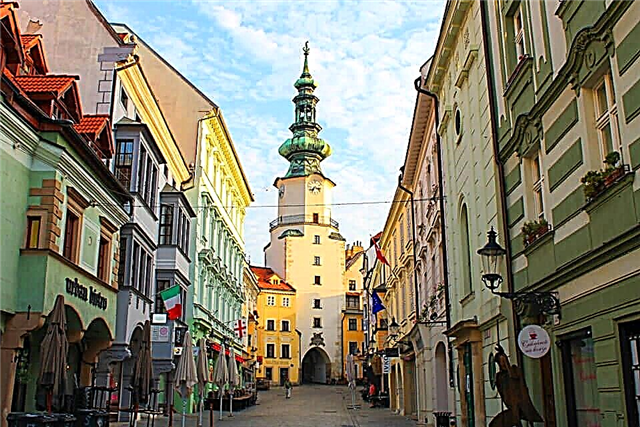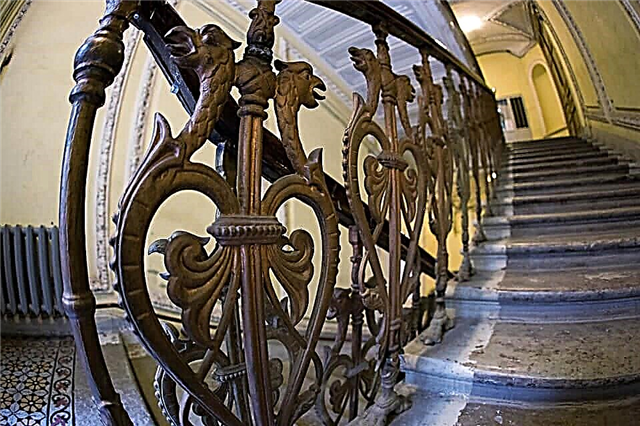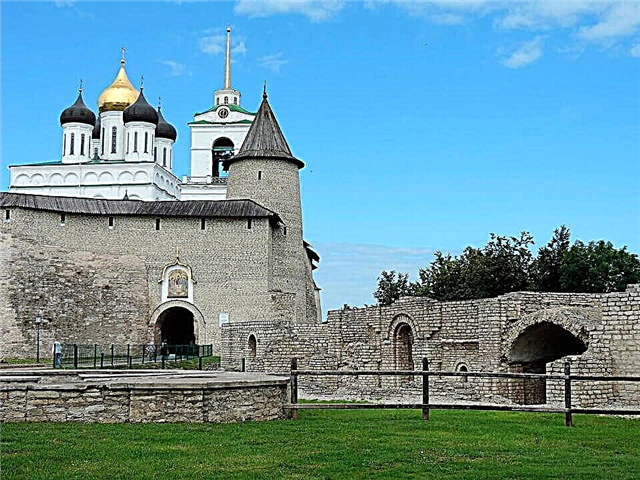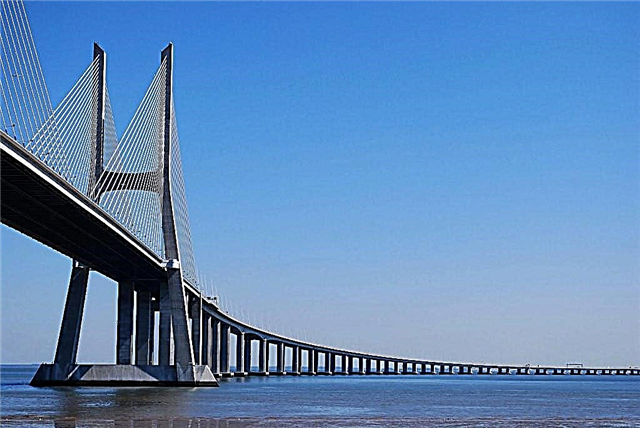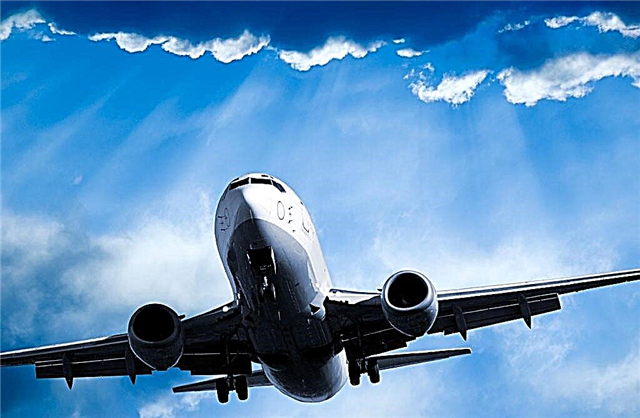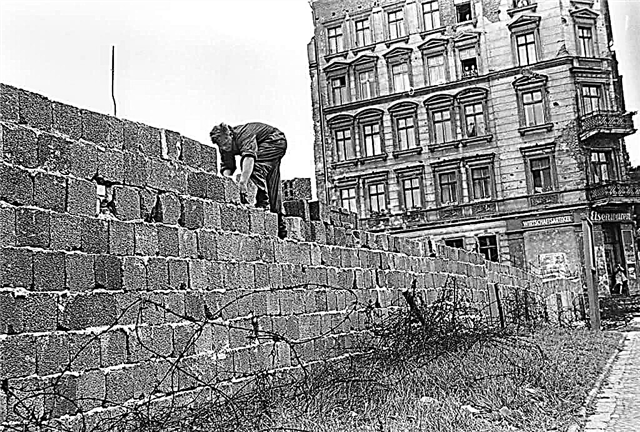More than a quarter of a century has passed since the fall of the infamous Berlin Wall. Willie Brand, one of the chancellors of the Federal Republic of Germany, called this building "the wall of shame". The concrete fence became a symbol of the split of Germany into separate states and the Cold War - a time of confrontation between two superpowers: the USSR and the USA.
Why did it take
The unconditional surrender of the Third Reich after World War II entailed a redivision of the world into new spheres of influence. The strengthening of the USSR's positions in Eastern Europe aroused fears of the countries of the Western camp, to which the idea of dividing the defeated state belonged. In February 1945, the participants in the Yalta Conference (America, England, France and the USSR) determined the post-war status of Germany: the allies agreed to dismember the country. Finally, the question of delimiting the four zones of occupation was resolved during the negotiations in Potsdam on July 17–02, 1945.
Four years later, in May 1949, a new state appeared on the world map - the FRG, and six months later - the GDR. The border stretched almost 1,400 km from Bavaria in the south to the Baltic Sea in the north. She cut through landscapes, settlements and the lives of millions of people. Berlin also turned out to be bipolar, while remaining a free zone. Residents moved without problems between the two parts of the divided city.
Walter Ulbricht, the first person of the GDR, was interested in stopping the ever-increasing outflow of citizens (especially valuable specialists) to the west side. He repeatedly addressed Khrushchev with letters about the need to strengthen control on the border with the FRG. The impetus for the construction of the fence was the political conflict in 1961. Its participants - the USSR and the USA - claimed the undivided ownership of the city. The Vienna negotiations, the subject of which was the status of Berlin, were not crowned with success, and the Soviet leadership approved the GDR's proposal to strengthen border control.
Construction history

On the night of August 13, 1961, barbed wire appeared in the eastern part of the city. Further, the armed forces blocked transport arteries and installed barriers. By August 15, the entire border line was cordoned off. The first blocks appeared. By creating a reinforced concrete structure, the builders blocked the streets, bricked up the windows of nearby houses, cut wires and welded pipes. The wall knew no barriers - it passed through metro stations, tram lines, railway crossings and the Spree River.

The Brandenburg Gate, located on the way, was fenced on all sides, making the main symbol of Berlin inaccessible to both Western and Eastern residents of the city. From 1962 to 1978, the building was completed and re-equipped. Each time, the wall took on more and more ominous outlines.
What was
The Berlin Wall is a 3.60 m high engineering structure composed of reinforced concrete segments. On top of the fence, iron pipes installed in 1975 were closed, which did not allow to cling to the edge of the fortification with their hands. At the same time, to enhance protection at the foot of the structure, anti-tank hedgehogs and barrier tapes with spikes, popularly nicknamed "Stalin's lawn", were installed. Several zones were supplemented with live barbed wire.

By the end of the 70s, a metal mesh with signal flares was reinforced in some areas on the eastern side. It was separated from the wall by an earthen ditch called the "strip of death". This area was guarded by dogs and illuminated by powerful searchlights. An illegal attempt to move to the western part of the city was punishable by imprisonment or death.
The total length of the structure was 155 km, of which 44.75 km were in Berlin. The "Shameful Wall" crossed 192 streets, 3 highways and 44 railway lines. All along there were 20 bunkers, 302 towers and 259 posts, guarded by guard dogs. The defensive fortification was patrolled by 10 thousand armed soldiers, who were ordered to shoot to kill if necessary.
Border crossing

The odious construction divided the city and cut off relatives and friends from each other. Only pensioners had the right to cross the border. Nevertheless, the reckless refugees tried to find loopholes through which they could leave the "socialist paradise". According to various sources, between 136 and 206 East Berliners died in the attempt to escape, most of them within five years of the start of the fence.
The first to be killed was Gunter Litfin, who was shot dead in August 1961 by GDR border guards while trying to get to West Berlin along the Spree. In 1966, 40 shots killed two children. They were 10 and 13 years old. The last two victims were Winfried Freudenberg, who crashed on March 8, 1989, flying over the wall in a makeshift hot air balloon, and Kriss Geffroy, who died in February of the same year in a hail of bullets while trying to cross the border.
Fall and destruction

Mikhail Gorbachev, who came to power, began to modernize the state and government apparatus. Under the slogans "Glasnost" and "Perestroika", he reformed the Soviet Union. The leadership of the GDR lost the support of the USSR and could no longer stop its citizens seeking to leave the country. Socialist Hungary, followed by Czechoslovakia, liberalized the border regime. The inhabitants of East Germany filled these states, wishing to get through them to the Federal Republic of Germany. The Berlin Wall was no longer needed.
In fact, the beginning of the fall of the wall was the evening of November 9, 1989. At a live press conference on the authorities' decision to open the checkpoints, a question was raised when the decree would come into force. In response, Schabowski, a member of the Politburo of the Central Committee of the Socialist Party of Germany, uttered the famous words: "As far as I know, this will happen ... now, immediately."

The Berliners watching the show on TV were numb. When the first shock passed, people on both sides of the border rushed to the hated fence. The border guards did not hold back their pressure. The reunion, which was dreamed of for 28 years, took place. The demolition of the Berlin Wall began on June 13, 1990 at Bernauerstrasse. But even before that moment, the townspeople smashed many of its fragments, taking away pieces of concrete as a souvenir.
Interesting Facts
For those of you looking to include an infamous sightseeing tour in your excursion program, it will be interesting to find out information that guidebooks do not contain. So, the Berlin Wall: facts and figures.
- On October 27, 1961, a confrontation between American and Soviet troops took place at a checkpoint on Friedrichstrasse - 30 battle tanks collided on the border.
- On June 11, 1964, French President Charles de Gaulle informed the USSR Ambassador about the possibility of starting a nuclear war in the event of a new military conflict in Berlin.
- Despite the increased security measures, in the period between 1961-1989. 5,000 citizens managed to get over the fence. Taking advantage of their official position, 1,300 GDR soldiers also crossed the border.
- After opening the passage, West Berliners showed generosity to the East German border guards - the bars near the wall dispensed free beer.
- Today, some of the concrete monster segments can be found in different parts of the world, such as the CIA headquarters and the Vatican.
- The construction and security of the border fence became a great economic burden for the GDR. The cost was over 400 million marks (200 million euros). Ironically, the "anti-capitalist bulwark" led to the collapse of the socialist country.
- On November 9, 2014, on the day of the 25th anniversary of the fall of the Berlin Wall, 7,000 rubber glowing balls were installed along the entire perimeter of the former border, which soared into the sky at exactly 19:00.
Berlin Wall today

At present, only small fragments and a double line of paving stones, a long snake wriggling around the city, remain from the structure, which has caused hatred and fear among people for 28 years. In order for the memory of the victims to remain forever in the hearts of people, the Berlin authorities have opened several museums and memorial centers located next to the remains of the wall.
Memorial at Bernauerstrasse
"Window of Memory" - this is the name of the memorial, created to familiarize contemporaries with the tragic events associated with the split of the capital. It is dedicated to people living in the eastern part and trying to get to the western one, jumping from the windows of houses and crashing to death. The monument is a composition of rusty iron that contains photographs of the dead.
Nearby there is an area of gray concrete and a border strip, a watchtower, the Chapel of Conciliation, built on the site of a blown up Gothic temple, a library, a museum and an observation deck. You can get to the memorial by metro (line U8). Stop Bernauerstrasse.
Topography of terror

This place is reminiscent of the countless tragedies caused by the Nazi regime. The museum is located on the territory of the headquarters of one of the leaders of the SS - Reichsfuehrer Himmler. Now, in the 800 m2 pavilion, visitors can look at photographs and documents introducing genocide and other crimes of fascism. Nearby, in the open air, are the ruins left from the barracks and cellars of the Gestapo, and part of the Berlin Wall.

Address: Niederkirchnerstrasse 8. You can get here by S-Bahn (city train). Line U2 to Anhalter Bahnhof.
Checkpoint Charlie

At the former border checkpoint for diplomats and officials, where in 1961 there was a conflict - the confrontation between Soviet and American tank divisions, today there is a Berlin Wall Museum. Among the exhibits are unique photographs and devices with which the East Germans moved to the west side: scuba gear, hang gliders and balloons. Near the museum there is a model of a sentry box with "soldiers" standing nearby, dressed in the American military uniform of that time. "Border guards" willingly take pictures with everyone.
Checkpoint Charlie is located on Friedrichstrasse next to the Kochstrasse underground station. The museum is open every day from 9:00 to 22:00.
East Side Gallery

In the eastern part of the metropolis, there is a 1300 m piece of wall. In the spring of 1990, 118 artists from 21 countries began to paint the concrete canvas. The result is the East Side Gallery, the longest open-air exhibition in the world. One of the famous works is a drawing by the Soviet artist Dmitry Vrubel, depicting a passionate kiss between the leaders of two socialist states - Eric Honnecker and Leonid Brezhnev.
But most of the authors who decorated the stone canvas are ordinary people who demonstrated their attitude to the dark pages of Berlin's history. Over the years, many of the gallery's images have suffered from rain and wind. In 2000, 40 graffiti were restored, and after another 8 years, a global reconstruction took place, the cost of which was 2.2 million euros.
East Side Gallery stretches along Muehlenstrasse. You can reach it by S-Bahn trains (S-Bahn) lines S5, S7, S75 to the stations Ostbahnhof or Warschauer Strasse.
Small sections of the Berlin Wall are located in the very center of the city - on Potdsdamer Platz, which was completely destroyed during the Second World War and rebuilt at the end of the last century.

